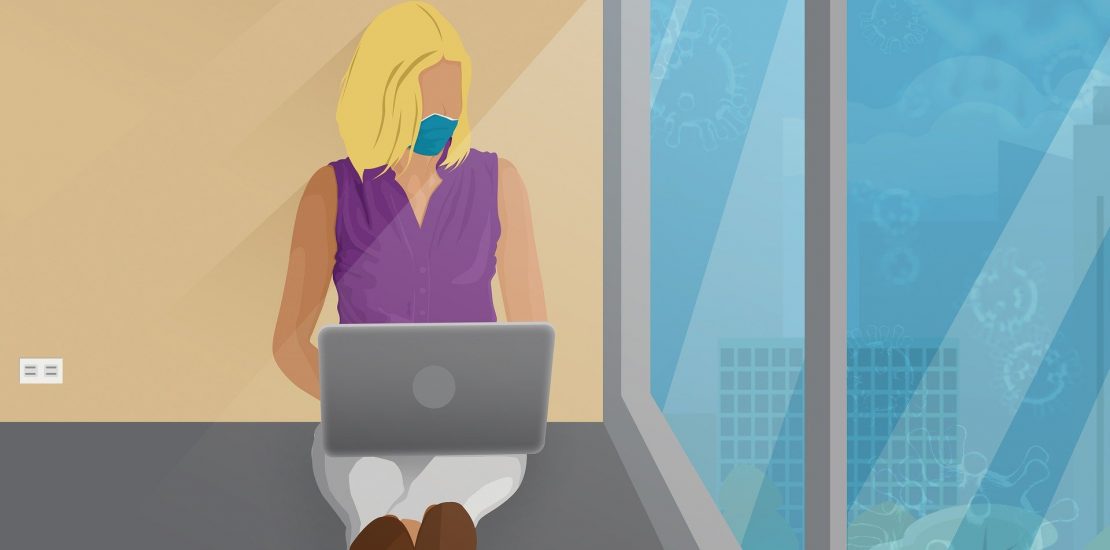- December 1, 2020
- Posted by: andreag
- Category: CommunicationLeadership

As we near the end of what has been a most challenging year for all, it is worth reflecting on what has been learned from coping with these challenges. For me, one of them is a renewed sense of the value of relationships and the importance of investing in growing and maintaining them.
As we all work virtually from home and tighten our bubble, it is easy to become lonely, missing friends and workmates. Virtual meetings with video help but are hardly a substitute for sharing a meal or coffee break together. It takes strong intention to hook up virtually.
Early in the year, I had a thought that I would use this time (we have lots of it) to reach out to persons I had not had contact with in years. I would either call, email, or send a personal note. The reaction was surprising. It was obvious that there was starvation for connection. I have continued the practice since which has brought me real joy. Several of those I contacted have now done the same with the same impact on their lives.
 On the other side of the coin, coaching leaders over the past year, I have noticed that relationships that have become strained are more difficult to repair in the COVID-era of no physical proximity. The nuances of communication that we normally read, i.e., facial expression and body language, are more difficult to read. Without those keys, the words alone must be relied upon. If trust has become an issue, re-building trust becomes more challenging. I have also sensed a bit more timidity in speaking the truth for fear of being misunderstood or creating an unwanted reaction.
On the other side of the coin, coaching leaders over the past year, I have noticed that relationships that have become strained are more difficult to repair in the COVID-era of no physical proximity. The nuances of communication that we normally read, i.e., facial expression and body language, are more difficult to read. Without those keys, the words alone must be relied upon. If trust has become an issue, re-building trust becomes more challenging. I have also sensed a bit more timidity in speaking the truth for fear of being misunderstood or creating an unwanted reaction.
I thought it might be helpful to review the dynamics that make up relationships; how to build them and what damages them. As humans there are just two ways in which we can build relationships, we can physically connect with a hug or whatever, or we can communicate with one another verbally. Well, physical touching has pretty much been taken off the table with COVID and was largely considered inappropriate in the workplace in the best of times. That leaves us with communication.
There is another element to relationships, again best seen when in physical proximity, and that element is affinity, defined as a spontaneous liking for someone or something. The people you choose to sit next to in a meeting or the lunchroom are those you have affinity for. When you meet someone for the first time, they register somewhere on your affinity index. If high, you pursue getting to know them. If low, you likely move on and avoid them. This instant response can be overcome, but it is something to be aware of. You tend to have affinity for people who seem most like those who have been a gift in your life to date. They make you laugh, they affirm you, they make you comfortable. My friend, Ken Blanchard, is a great example of this. When he enters a room, virtually everyone feels his affinity for them and they return it in kind. He fills the room with genuine love, a rare gift indeed. Establishing relationship with Ken is easy.
Putting aside affinity for a moment, what else influences relationship? One influencer is the extent to which we see the world the same. Do we have similar political views? Views on spirituality and religion? Favorite movies? Sports teams? There are a whole host of areas on which to agree or disagree. We tend to like to be around those who agree with us and tend to forgive being slighted by them. Not so much those we disagree with. This is one of the challenges in building effective teams in the workplace. If we are going to get to an optimal decision, we need to include varying viewpoints to overcome our blind spots. Yet, we are not always comfortable being with those who disagree as we sometimes feel invalidated by them.
All of this brings me to the last and most important dynamic in relationships, communication. I say most important because it is the only tool (other than physical contact) that can shift affinity and work thru disagreement. So, what is good communication? It is the exchange of words and ideas that produce common understanding. Not agreement necessarily, but understanding.
If I want to build relationship, I need to build understanding. The test of understanding is whether or not the person communicating to me feels understood. It is beyond good listening which involves paying attention and not interrupting. And it is beyond assuring that my communication is understood. It means actually communicating verbally or non-verbally that you understood what was just told to you. Among Alaska Natives that can be done via raising one’s eyebrows. For the rest of us, it means pausing instantaneously and then replying, “understood”, “got it” or “yes”.
When completing interviews of peers/subordinates as part of an initial assessment for an executive coaching engagement, I often hear about poor listening. What they are really saying is that their opinions were not valued or even acknowledged. Instead, the leader responds with his or her own thoughts, sometimes before the person trying to communicate with them has even responded. Little can do more damage than such a habit.
Now, let’s talk about how to repair a damaged relationship or build relationships in this COVID era of no physical proximity. It is really quite simple, demonstrate interest in the other person. How? By asking questions. How are you coping with COVID? How is your family? Do you find working from home challenging? Have your thoughts about your work life changed? And, on and on. The questions are endless. What occurs here is that if you show genuine interest in someone via good questions and understanding of responses, then the other party will come to show interest in you. What about you? You seem to be doing OK but is this hard? Eventually, these exchanges lead to finding points of agreement, possibly greater affinity, and the relationship builds. If you are really struggling with this, then find something, no matter how trivial, that you like about someone and communicate it. “I have always liked that sweater!” “That new haircut looks great”. “Saw your email to Fred. Great job.” Then, move on to questions, remember to communicate your understanding of what is being said, and watch the relationship build or repair itself.



